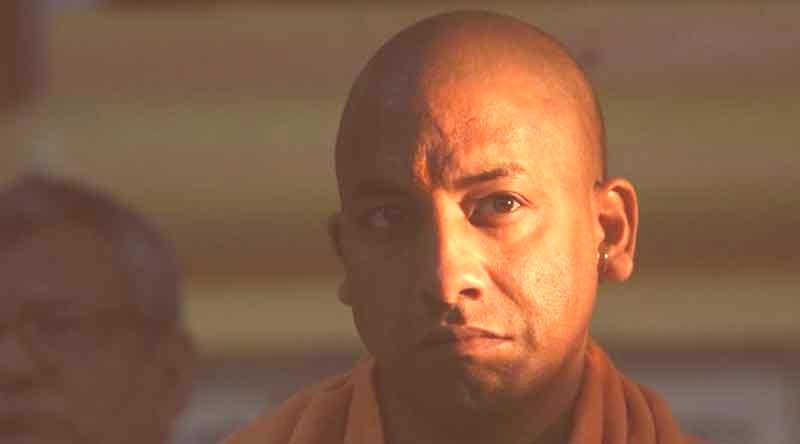During the election campaign for the Uttar Pradesh assembly election, PM Narendra Modi’s “shamsaan and kabristan” speech drew much controversy and the secular brigade left no opportunity to tear the PM apart. Though Narendra Modi actually said to give equal importance to both “samshaan” and “kabristan”, the media took the liberty to do a thorough autopsy of the speech to give it a communal colour. But, these strategies and attempts went in vain and the BJP won with a whopping majority in the assembly election with the most controversial figure, the saffron-clad saint Yogi Adityanath becoming the CM of India’s most populous state.
Recently, the media again went berserk in July 2017 when the Yogi government announced the annual budget of the state.
In 2016, the former CM Mr. Akhilesh Yadav had allocated Rs. 400 crore for the boundary walls of the graveyards/Burial Grounds. This year, CM Yogi Adityanath stopped the allocation.
As a result, seculars, liberals, intellectuals and media houses criticized him by calling him partial, discriminative and communal.
Here is an image of a newly constructed boundary wall of a graveyard in Barisarpur, near Lucknow’s Mohanlalganj. The boundary wall was reconstructed during the Akhilesh government last year.
Does this boundary wall need to be reconstructed again, this year? The amount of Rs. 400 crore for the boundary walls of the burial grounds is a big amount, which can help reconstruct new walls that can at least sustain 6 years. The consecutive previous years’ allocations have provided enough amount of money for the walls, and so, there is no need to allocate the same amount again this year. Clearly, reconstructing newly constructed walls is a “wasteful project“. Yogi Adityanath knows better ways to use the money, which is evident from some schemes that media did not highlight, intentionally or unintentionally.
Last year, the overall budget for the minority welfare was Rs. 2029 crore. If we remove Rs. 400 crores for the boundary walls from the budget, then an amount of Rs. 1629 crore was available for other minority schemes. Yogi Adityanath allocated an overall amount of Rs. 1695 crore, which is Rs. 66 crore more than Rs. 1629 crore. The Yogi government has increased the funds for “scholarship and fees reimbursement for minority students” to Rs. 941 crore. Apart from that, Rs. 18.41 crore will be spent to set up women’s hostels for minority students.
On the other hand, the fund for “scholarship and fees reimbursement” for backward category students is Rs. 1203 crore. For general category students, it is Rs. 682 crores. For tribals, it is Rs. 23 crore and for scheduled caste students, it is Rs. 1950 crore.
The Yogi government has allocated the biggest fund for agriculture, which is Rs. 67,682 crore. The last year’s budget was Rs. 29,771 crore. The Yogi government also allocated Rs. 261.66 crore for soil survey and testing. This will help farmers from all communities, including the minority community.
The fund allocation to burial grounds was not only a wasteful project, but also a corrupt one. After Yogi came to power, he ordered probes to investigate the schemes by the previous government. This also initiated a probe regarding the allocation of Rs. 1300 crore for the burial grounds. A three-member committee found that though the scheme was for all minority communities, the money was used only for the burial grounds of the Muslim community.
During 2012 assembly elections, the Samajwadi Party made a poll-promise of building boundary walls around Muslim burial grounds. After coming to power in 2012, the SP government gave a nod to the proposal. District Magistrates were asked to receive proposals from the Shia and Sunni Central Waqf Board and to sanction the cost of the boundary walls. The BJP protested the decision, calling it “Muslim appeasement”. Due to the pressure, the scheme was renamed to “Alpsankhyak Samudaayaon ke Kabristaanon/Anteyshti Sthal ki Bhoomi ki Suraksha Yojana“. The scheme covered the boundary walls of the burial grounds of other minority communities like Christians, Sikhs, Buddhists, Jains and Parsis.
Spending the entire amount to build the walls for the burial grounds of a specific minority community by neglecting other minority communities is indeed an act of appeasement. The current government is right in ensuring a probe against such corruption. The probe would be conducted on several grounds- regarding the quality of construction, illegal possession of land through the boundary walls of kabristans and alleged anomalies in awarding contracts for the construction. Until the probe comes up with detailed reports, the Yogi government is right to stop the allotment.
The General Secretary of All India Shia Personal Law Board (AISPLB), Mr Yasoob Abbas criticized the Yogi government by saying- “Government must focus on the graveyards as the population in urban areas is increasing but the numbers of graveyards are not increasing. So, there is a problem where to bury the dead bodies”.
He is indeed right about the increase in population. The more the population rises, the more number of graveyards will be needed to bury the dead. Apart from food, employment, home and other resources, which are affected by the abnormal rise of population, the availability of enough burial grounds is also an additional problem. Hence, the population control is the need of the hour.
To end the discussion with, I want to put forward a question. India is the seventh largest country in the world, yet India has the largest population of urban poor and landless people in the world. Many homeless people live on the streets, under bridges, on railway stations, near dump-yards, on pavements, etc.
When such a big population of living people has no land and no home to live a standard life, do we have the luxury to waste the potentially inhabitable lands by turning them into graveyards for the corpses? I leave it to the readers to decide.
